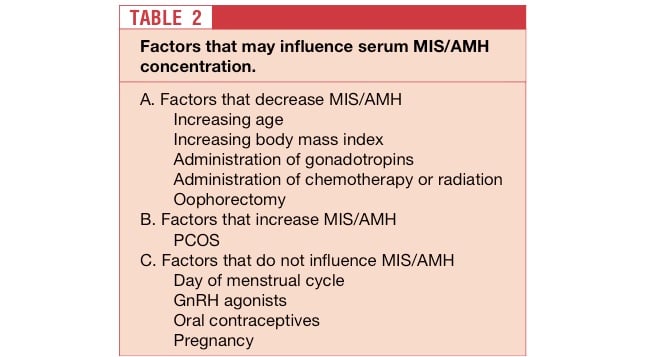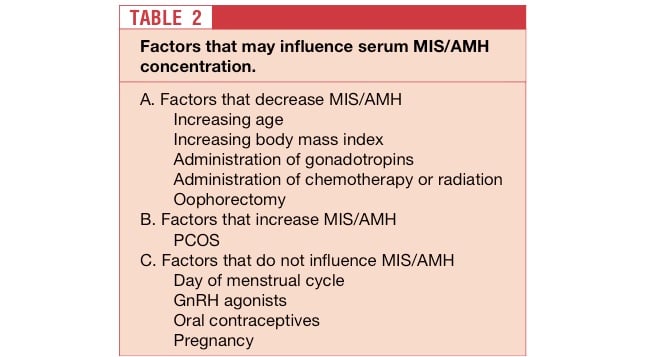Anti-mullerian hormone (AMH) is the substance that is responsible for destroying the mullerian ducts (female reproductive organs) in developing male embryos...
- Anti-mullerian hormone (AMH) is the substance that is responsible for destroying the mullerian ducts (female reproductive organs) in developing male embryos. An important discovery was the synthesis of AMH by granulosa cells (the cells surrounding a mature egg) and this was followed by the development of accurate blood tests to measure AMH. For the past 20 years the importance of AMH with regard to ovarian function has been extensively studied.
- AMH is produced in the greatest amounts by antral follicles measuring < 6 mm. Follicles > 8 mm in diameter, theca cells and atretic follicles have virtually undetectable levels of AMH. AMH is believed to impede the transition from primordial follicles into growing antral follicles. During ovulation induction, there is a decline in the AMH levels. This is to be expected as larger preovulatory follicles produce less AMH.
- AMH levels decline with age. A decline in AMH level may be the earliest marker of ovarian aging. This is followed by a decline in inhibin B and later by a rise in FSH levels. There are studies that suggest that AMH levels may (in the immediate future) be useful in predicting when a woman will undergo menopause.
- Obese women have 65% lower mean AMH levels than non-obese women. This suggests that obesity might be associated with diminished ovarian reserve.
- AMH levels do not vary much throughout the menstrual cycle. Unlike FSH levels (which should be measured on cycle days 2, 3 or 4), AMH levels can be measured on any day of the cycle. It can therefore serve as a unique untimed marker of ovarian reserve!
- AMH levels predict ovarian response in IVF. Higher AMH levels are associated with greater number of retrieved eggs. On the other hand, lower AMH levels (<0.5 ng/mL) predict poor ovarian response with a sensitivity of 85% and specificity of 82.3%.
- AMH levels > 3.5 ng/mL are associated with an increased incidence of ovarian hyperstimulation syndrome. AMH levels can therefore be used as a guide when deciding on the dose of fertility drugs for ovulation induction. In patients with high AMH levels, the dose should be lowered and the opposite is true for patients with low AMH levels.
- AMH levels are NOT influenced by birth control pills, pregnancy or by GnRH agonists (e.g. Leuprolide acetate, Lupron).
- In cancer patients that have undergone chemotherapy or radiation, AMH levels may be a marker of ovarian injury.
- A combination of age, AMH level, FSH level and ultrasound markers such as ovarian volume and antral follicle count can be used to assess ovarian reserve. At InVia Fertility Specialists, we use AMH levels to screen our potential anonymous egg donors. We prefer donors with AMH levels > 1.5 ng/mL.

To see a fertility specialist who is a board-certified physician with excellent success rates, make an appointment at one of InVia’s four Chicago area fertility clinics.



